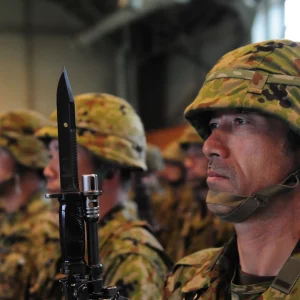
Nordic countries have become somewhat of an international sensation. In the last decade, they seemed impervious to the economic and social woes that ossified economic growth in Europe and Asia and reflected extreme inequality in the United States. Many attribute their success to the “Nordic model,” a unique political and economic template that has raised standards of living through heavy spending on social services without significantly hampering economic growth or business development. Given their recent economic crises, European, Asian, and even some U.S. policymakers have begun to consider emulating the system’s successes. However, implementation of the welfare-oriented system for most countries is, at the moment, near impossible because they sorely lack the cultural and strategic foundations that are necessary for the model to thrive.
The Nordic Model
The Nordic model, which exists primarily in Sweden, Denmark, Norway, and Finland, involves a “balance of regulated capitalism, universal social welfare, political democracy, and the highest levels of gender and economic equality on the planet.” The Research Institute of the Finnish Economy further explains certain key features of this economic and political structure:
- comprehensive welfare states offering social services financed by high taxes
- enormous public and private spending in human capital, including child care and education, and research and development
- prominent labor market institutions such as strong labor unions and employer associations, wage coordination, and generous unemployment benefits.

This system works largely because of the cultural underpinnings that pervade the Nordic countries, which place high value on shared interests, social benefits, public trust, a strong work ethic, and a universal expectation of enormous personal responsibility. Its profusion of generous social benefits also relies on the Nordics’ emphasis on labor market participation and imposition of the highest taxes in the world. High tax rates are amplified by a flat tax policy, whereby most people pay taxes at high rates, not just high-income taxpayers.
One-Size-Does-Not-Fit-All
Although countries abroad praise the Nordics for their balancing of capitalism and private-sector business development with robust public sector social benefits, it is important to recognize that most countries are culturally and strategically incompatible with the Nordic political and economic infrastructure.
The United States provides a prime example of such incompatibilities. From a cultural standpoint, the U.S. lacks the homogeneity that is central to the success of the Nordic model. The Nordic countries are made up of small, ethnically homogeneous populations that share a unique culture of mutualism. The Norden is largely exclusive, opposed to immigration because of supposed free-rider migrants who receive benefits without paying taxes and who share differing cultural values. Indeed, countries such as Norway and Denmark have recently curbed migrant access to maintain political and social stability and cultural homogeneity. In stark contrast to the Norden’s monolithic and highly cooperative culture, the U.S. is relatively open to multiculturalism and retains an ingrained cultural belief in the potential of independent, self-driven prosperity. In fact, while the Nordics consider social benefits “equally available as a human right,” many in the U.S. are opposed to what they scornfully dub as “handouts.” Moreover, the U.S. also continues to be one of the least taxed countries among all developed countries with taxes making up about 24.8% of the U.S.’s GDP in 2010, compared to the 47.6% that taxes contribute to Denmark’s GDP. That U.S. culture hedges on independence and self-service prevents the rise of large scale, willful mutualism and generous, universal welfare programs.
From a strategic standpoint, the U.S.’s priorities are vastly different from those of Nordic countries. Whereas Nordic countries spend minimally on their military development—indeed, they are

absent from the list of the world’s top militaries and even further slash military spending by sharing military capabilities—and instead focus their efforts on policies related to bio-economy and health, the U.S. spends an overwhelming amount of its budget on military development as a means of guaranteeing state security and flexing its foreign policy muscle. Many in the U.S. fight for yet increased military spending to combat terrorism and act as a so-called “global policeman.”

The Chinese, who also seek to learn from the Nordics, provide other examples of incompatibilities with their system. Whereas the Nordic countries rely extensively on a culture of high citizen trust and political transparency, Beijing’s government, operating under an authoritarian system, remains one of the most corrupt in the world and resorts to censorship and the restriction of various freedoms to maintain stability. Supposedly high approval ratings are likely inaccurate and belie fear and feigned support directed toward the one-party government. Indeed, an independent third party poll reveals 53% of Chinese citizens agree that corruption is an enormous political problem, indicating low levels of trust in governance. Nordic countries also experiment with free education and seek to develop free-thinking human beings, whereas the Chinese education system is largely focused on developing vocational skills, emphasizing order and obedience, and containing liberal, free-thinking academics.
China’s strategic goals also differ from the goals of Nordic countries. Some might argue that Chinese government spending, much of which is diverted into social programs, indicate that China has the potential to implement a model similar to that of the Nordic countries. However, the percentages released by the Chinese government are likely inaccurate, as they do not reveal funds siphoned by corrupt officials and, for security purposes, presumably downplay increased military development. Even if an enormous portion of Chinese government funds were dedicated to social services, the strategic goal behind such an investment is not reflective of the welfare and goodwill that the Nordic governments seek to impart upon their constituents. Rather, given the authoritarian nature of the Chinese government, spending is meant to promote not societal welfare, but citizen loyalty, large-scale social stability, and, therefore, regime survival. Thus, much like the U.S., China is culturally and strategically obstructed from a successful and complete implementation of the Nordic model. In order for China to adopt a model similar to that of the Norden, Beijing must change its oppressive political culture—something that would take decades and seems far-fetched.
“Progressive Model” Alternatives
Most countries’ cultural fabric and strategic goals are not optimal for a complete implementation of the Nordic model, which demands homogeneity and enormous economic investment in welfare. However, countries can still learn from and emulate progressive policies similar to those in the Norden. Countries can re-orient their budgets to, for example, increase gender equality via such policies as paid paternity or maternity leave; expand public healthcare, as many European countries have already done; and provide discounted or “free education from age 6 through specialty training or university.” Cultural difference would, of course, make it so that such policies are less effective than they are in the Norden; however, countries can look to bettering their standards of living and perhaps slowly change social norms and cultures through implementation of manageable, lite versions of such policies without spending or taxing as heavily as the Nordics.






One Comment